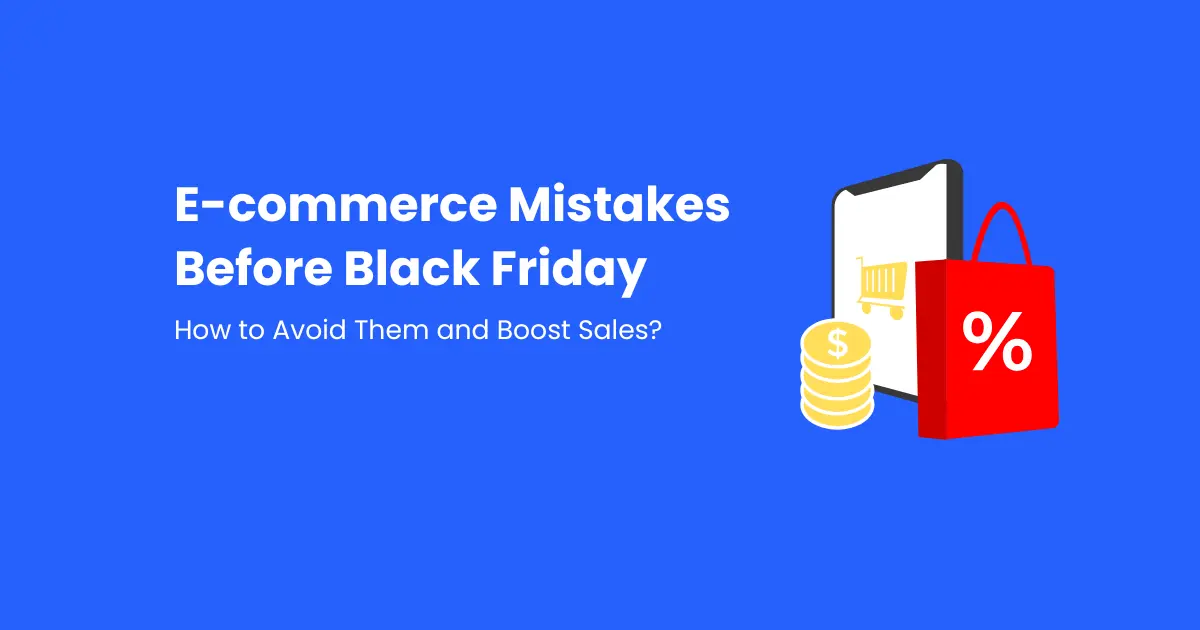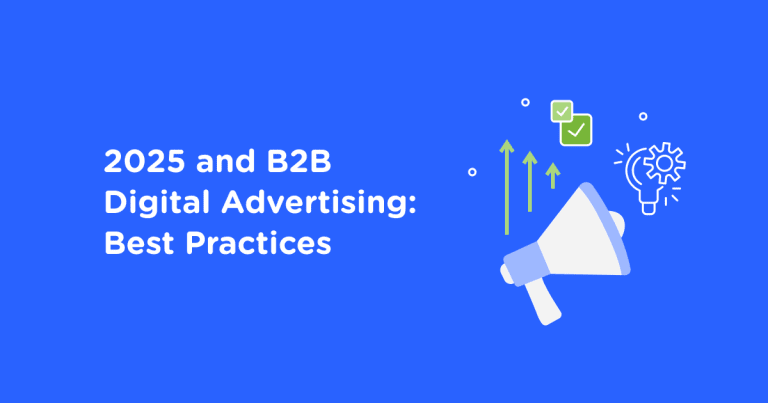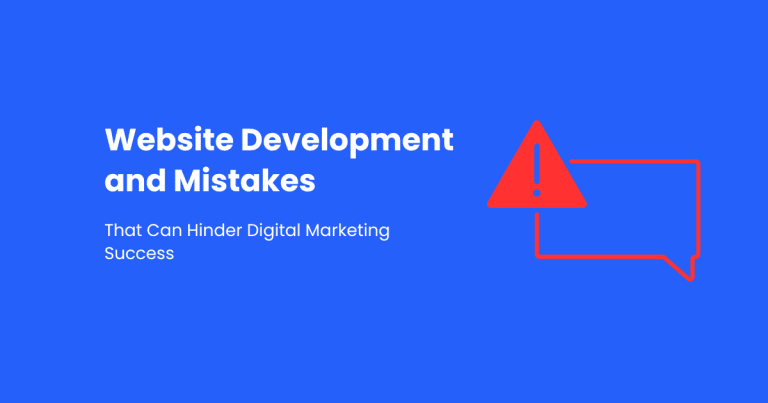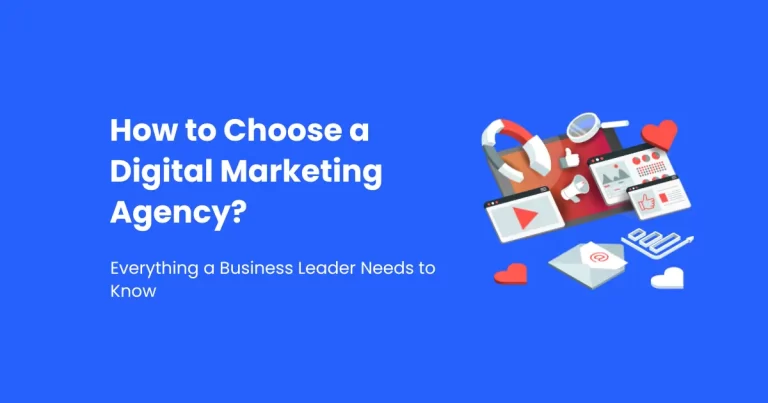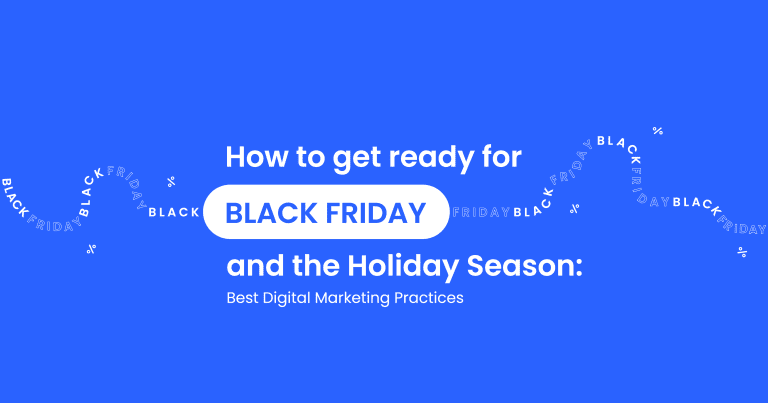As Black Friday approaches, e-commerce businesses get ready to reach new sales heights and close the year with strong results. Many rush to plan their campaigns and special offers, but in doing so, they often fall into their own traps. They start planning too late, offer poorly thought-out discounts, or neglect the technical setup of their online stores.
In this article, we look at common mistakes e-commerce businesses make when preparing for Black Friday. We also highlight key 2025 trends. Finally, you’ll find practical steps to help you build a profitable and seamless shopping season. In this article, you’ll discover:
- Why Black Friday planning should start well before November.
- How technical readiness and mobile experience can determine your sales success.
- Why your discount strategy should be based on value, not just percentages.
- How segmentation and data analysis help avoid mistakes and reduce ad costs.
- Why it’s important to prepare not only for Black Friday itself but also for the post-Black Friday period.
- How 2025 trends (AI, social media, and the growing importance of customer trust) are reshaping e-commerce rules.
- How to prepare systematically so this year’s Black Friday becomes a period of efficient growth, not chaos.
Avoid Costly E-commerce Mistakes and Maximize Your Black Friday Sales
Why Black Friday Remains One of the Most Important Days for E-commerce
Black Friday is no longer just a one-day sale. It has turned into an entire season. During this time, e-commerce businesses compete fiercely for attention, while shoppers hunt for the best deals. This period offers the greatest profit potential of the year, but only for businesses that prepare properly.
In recent years, Black Friday has evolved into a marathon of sales lasting several weeks or even a full month. Success now depends not only on the size of discounts but also on strategic planning, technical readiness, and the ability to stand out through communication. Yet, many online stores continue to repeat the same mistakes year after year, costing them not only revenue but also customer trust.
The Black Friday period is one of the most critical times of the year, as consumer activity peaks. In 2024, global online sales rose by 14.6%, and more than two-thirds of all purchases happened on mobile devices. These numbers show how fiercely businesses compete for consumer attention — and how those that don’t prepare early quickly disappear in the noise.
Why Late Black Friday Planning Can Cost You Sales
One of the biggest mistakes e-commerce businesses make is starting their Black Friday preparations too late. For many, the idea of Black Friday only appears in early November. By then, competitors have already set their offers, booked ad budgets, and launched campaigns.
This late start leads to rushed decisions. Teams set discounts without a clear strategy, create ad content at the last minute, and launch campaigns without proper checks. As a result, they face technical issues, website errors, and even unchecked discount codes.
Time pressure often makes businesses skip important steps. They forget to assess capacity, review logistics, test their websites, or check the user experience. This reactive approach can be costly — both financially and reputationally. When the launch doesn’t go smoothly, the most valuable first hours of sales are lost. That’s exactly when traffic peaks and competition is strongest.
Successful businesses treat Black Friday as a project that requires time, strategy, and discipline. They start planning early, often in September or even before. These companies set clear goals, define KPIs, allocate budgets, and test systems in advance. They also prepare email sequences, ad banners, and content calendars. With a clear plan, they act strategically instead of chaotically. That’s why some brands achieve record-breaking results while others face stress and losses.
Black Friday Technical Readiness – The Hidden Key to Success
Technical preparation is one of the most crucial yet often underestimated elements of e-commerce Black Friday success. When an online store’s traffic multiplies several times over, even strong platforms can struggle to handle the load. Website slowness, a complicated checkout process, or errors in the shopping cart directly reduce sales and frustrate users. Research shows that as many as 12% of shoppers abandon their purchases simply because a website is too slow — meaning that even with the best offers, technical issues can cost thousands in lost revenue.
The problem is that these errors usually surface only when it’s too late to fix them. During the Black Friday period, customers expect a fast, smooth, and intuitive experience, and every second of delay can mean a lost sale. That’s why it’s essential to test your website before the campaign begins — checking page speed, ensuring server capacity, and verifying the stability of your payment system. It’s equally important to confirm that all buttons work, discounts are applied correctly, and the system can handle an increased volume of orders without glitches.
Special attention should be given to the mobile experience. In 2024, more than two-thirds of all Black Friday purchases were made on mobile devices, which means mobile design can no longer be a secondary priority. Your site should load quickly, look visually clean and clear, and provide a simple checkout process with as few steps as possible. Today’s shoppers value not just discounts but also convenience — if it’s easier to buy from a competitor’s site, they’ll choose it even with a smaller discount.
In short, technical readiness is the silent but decisive factor that can determine the success of your entire campaign. It’s an investment that often pays off within the very first hours of Black Friday.
E-commerce Discount Strategy – A Matter of Value, Not Just Percentages
One of the most common mistakes businesses repeat before Black Friday is having an unplanned or poorly thought-out discount strategy. Many online stores still apply one blanket discount across their entire assortment — often due to time constraints or a desire for a “simple solution.” While this approach can temporarily boost sales volume, it ultimately reduces profitability, distorts brand positioning, and weakens customer trust.
Today’s shoppers are well-informed and highly price-sensitive. They track price histories, compare offers across platforms, and can easily spot artificially “inflated” prices later presented as “huge discounts.” Such marketing tricks might work in the short term, but in the long run, they damage brand reputation. Consumers quickly lose trust when they realize that discounts aren’t real and pricing is manipulative.
A sustainable way to harness the full potential of Black Friday is to build a value-based discount strategy for e-commerce. This means discounts should be thoughtful, differentiated, and aligned with specific business goals. For example, offer higher discounts to loyal customers or newsletter subscribers, provide early access to registered users, or encourage larger purchases by bundling products into sets. This approach not only increases the average order value but also creates a sense of exclusivity that strengthens customer relationships.
Additionally, it’s worth assessing which products truly drive profit and which can be used as “magnets” to attract traffic to your website. Lower-margin items can often serve as hooks for acquiring new customers, while the main profit should come from core or add-on products. Such a strategy helps strike the right balance between offering an appealing deal to customers and maintaining sustainable profitability for the business.
E-commerce Segmentation and Data – The Power of Precision
Another common mistake repeated before Black Friday is ignoring data and customer segmentation. Many businesses still rely on mass communication — one email for everyone, the same message for different customers, and identical ads shown to all audiences. This approach might have worked a decade ago, but today, when consumers receive dozens of promotional messages every day, it simply loses its impact. Generic content no longer creates an emotional connection, and irrelevant messages usually end up straight in the spam folder.
In modern e-commerce, personalization is no longer a luxury — it’s a necessity. During the Black Friday period, consumers are bombarded with offers, so the only way to stand out is by matching your message to their real needs. Segmentation enables targeted, data-driven communication based on user behavior, purchase history, average cart value, or loyalty level. This kind of analysis not only increases conversions but also reduces wasted ad spend — because messages are shown to those most likely to buy.
For example, loyal customers can receive personalized offers with early access to sales, new shoppers can be given a special discount code, and users with abandoned carts can get reminders with an extra incentive to complete their purchase. These personalized actions boost both conversion rates and customer trust and satisfaction.
Moreover, data analysis allows you to monitor campaign performance in real time and make quick, informed adjustments. If a certain segment isn’t responding to your communication, content, or channel, you can immediately optimize it. This way, campaign efficiency improves, and the budget is used more effectively.
Fast Logistics and Quality Service – The Silent Chain of Success
Logistics is one of the main areas where e-commerce businesses struggle. Product shortages, inaccurate stock updates, and delivery delays can quickly damage the reputation that an online store has worked hard to build.
During Black Friday, customers don’t like to wait. If delivery times are too long or information isn’t clear, they’ll move to a competitor without hesitation. That’s why it’s important to check warehouse capacity early, share a clear shipping policy, and prepare for smooth returns.
Customer service is another often-overlooked part of the Black Friday experience. The sale doesn’t end when a shopper clicks “Buy.” How fast inquiries are answered, how returns are handled, and how post-purchase communication is managed all affect whether customers come back. Many businesses relax after the busy week and lose the chance to turn one-time buyers into loyal customers.
2025 Black Friday Trends: AI, Mobility, and Authenticity
Black Friday 2025 is being shaped by new trends. One of the biggest is the rise of artificial intelligence (AI) in marketing and shopping. Today, AI tools help businesses forecast demand, personalize offers, and segment audiences more accurately. They also show which products interest specific customers, when they are most likely to buy, and what message will motivate them to act.
According to DHL’s 2025 e-commerce trends report, 70% of consumers now expect a personalized shopping experience. As a result, one-size-fits-all offers are losing relevance. Personalization is becoming a key competitive advantage.
Another major trend is mobile commerce, which now dominates global sales. More than two-thirds of all Black Friday purchases happen on mobile devices. This makes mobile-friendly design, fast page loading, and a simple checkout process essential. Shoppers want to complete their purchases in just a few clicks — without extra fields, redirects, or payment errors. Businesses that improve the mobile experience and present clear, easy-to-understand promotions tend to earn more and build stronger customer trust.
The Rise of Black Friday Month
A new shift is emerging with the rise of the “Black Friday month.” Many businesses now spread their promotions over several weeks instead of focusing on a single weekend. This approach helps avoid ad cost spikes, keeps customer attention steady, and extends the entire sales period. Starting early also gives businesses time to test offers, track consumer behavior, and adjust their strategy before the main shopping weekend.
Social commerce is another fast-growing trend. Shoppers now buy directly through Instagram, TikTok, and Facebook Shops. Live shopping streams, product reviews, and short videos are becoming key parts of the buying process. People trust content made by real users more than by brands. Authentic creator recommendations and live demos strongly influence buying decisions, especially among younger audiences. This kind of content helps brands build emotional connections and appear more genuine — not just promotional.
As Black Friday period is very hectic, we prapare a list of AI tools that will help you to optimise this process. Read the article: The Best AI Tools for Business: What’s Worth Trying?
How to Prepare Without Stress: From Planning to Analysis
To avoid stress and ensure success, start preparing early. Ideally, Black Friday planning should begin at least eight weeks before launch. During this time, set clear goals, define your budget, and create a content plan. Check your website’s technical stability and outline the main communication steps. In the weeks leading up to the event, test all payment processes. During the campaign, monitor your data and respond to changes in real time.
After Black Friday, it’s essential to analyze the results: review conversion rates, traffic quality, average order value, repeat purchases, and email performance. This analysis helps you understand what worked and what didn’t, so you can prepare even better for the next season.For a detailed guide on how to prepare for this crucial period, read our article: How to get ready for Black Friday and the Holiday Season: Best Digital Marketing Practices
Success Is Driven by Strategy, Not Discounts
Black Friday success doesn’t depend on how many discounts you offer. It depends on how strategically you use them. E-commerce businesses that plan early, analyze their data, and focus on user experience achieve higher sales and build stronger, long-term customer relationships.
Black Friday 2025 will be more intense and competitive than ever. The businesses that stand out will be those that think strategically, use data wisely, and create meaningful experiences — not just promotions.
If you want this year’s Black Friday to bring growth instead of chaos, start preparing now. The sooner you take action, the stronger your foundation will be for a successful season.
Here you can find some good tips from Google on Black Friday. Read the article: From awareness to conversion: Matt Sleeps’ full-funnel blueprint for Black Friday marketing
FAQ
When should you start preparing for the Black Friday season?
Ideally, preparation should begin at least eight weeks before Black Friday. This allows enough time to ensure technical readiness, plan communication, optimize your website, and create a well-thought-out discount strategy.
What are the most common e-commerce mistakes before Black Friday?
- starting planning too late,
- failing to test website performance and checkout processes,
- applying the same discount to all products,
- ignoring customer segmentation and data analysis,
- overlooking logistics and after-sales communication.
How can you create an effective discount strategy?
A successful discount strategy should be value-based, not percentage-based. It’s best to make your offers stand out. Give loyal customers early access and offer special deals to newsletter subscribers. You can also create product bundles to add extra value. This approach helps increase average order value and customer satisfaction.
How do segmentation and data analysis help boost sales?
Segmentation allows you to tailor offers based on user behavior, purchase history, and loyalty level. Data analysis helps you use your ad budget more efficiently and reach audiences that are most likely to convert.
What are the key Black Friday 2025 trends?
The most important trends include AI integration, the rise of social commerce, and the dominance of mobile shopping. Another key shift is the growing focus on authentic content. Businesses that adapt to these trends will stand out in a highly competitive market.
Need help growing your business? Contact us!
Fields marked with * are mandatory.
